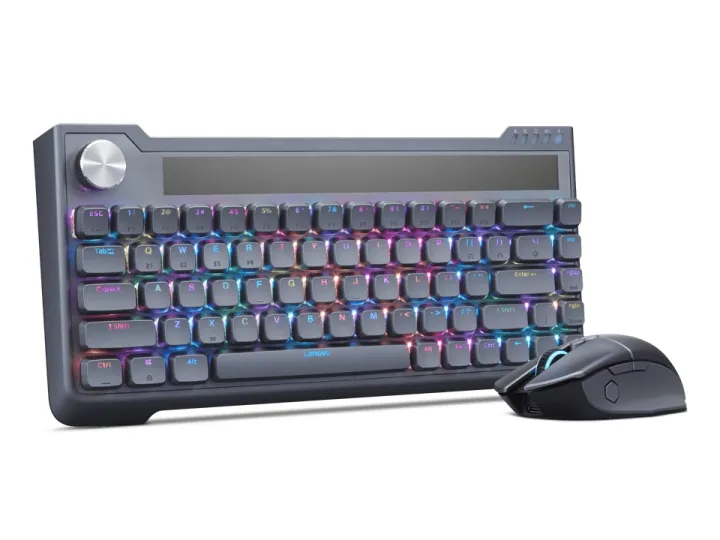

Lenovo has a new proof-of-concept mouse and keyboard that can harvest mechanical energy to remove the need for external power. At first glance, they appear to be a standard mouse and keyboard set designed for gamers. Yet, their distinguishing feature lies in their dependence on manually generated mechanical energy, completely removing the necessity for charging.
The wireless keyboard comes in a TKL (enkeyless) form factor with a total of 68 keys, RGB lighting support, and a sleek metallic gray color. At first glance, the large circular dial on the top seems to look like a volume knob, but its actual job is to convert kinetic energy into battery charge.
Lenovo claims that just five minutes of spinning the dial can provide approximately 30 minutes of keyboard usage. That’s essentially 28 hours of spinning if you want to keep the keyboard powered up for an entire week. The keyboard also features a horizontal solar panel strip on the top, offering an alternative source of energy aside from its mechanical functionality.

The accompanying mouse is equally innovative. The distinctive ring-shaped crank at the bottom can be pulled up and wound to supply charge to the device’s battery. One minute of winding is purported to deliver approximately 30 minutes of charge.
Both the keyboard and mouse support Bluetooth and 2.4GHz wireless connectivity, offering flexibility in usage. Lenovo further enhances the keyboard’s utility by including a detachable USB-C cable, offering users the option of a wired connection when needed.
As of now, we don’t have any information on whether the mouse can also charge via solar energy, but it seemingly includes a USB port for wired connectivity. It will also come with a Blue optical sensor boasting a 12,800 DPI (dots per linear inch).
Lenovo has not disclosed any additional specifications for these devices, and there is no confirmation on whether the mouse and keyboard combo will go into actual production given their experimental nature.
Besides its mechanical energy-harvesting mouse and keyboard combo, the company also introduced a host of new laptops at CES this year, notably the ThinkBook 14 i Gen 6+, which comes with its own external graphics solution, as well as the updated Lenovo Legion 9i gaming notebook, which is even more powerful than its predecessor.



